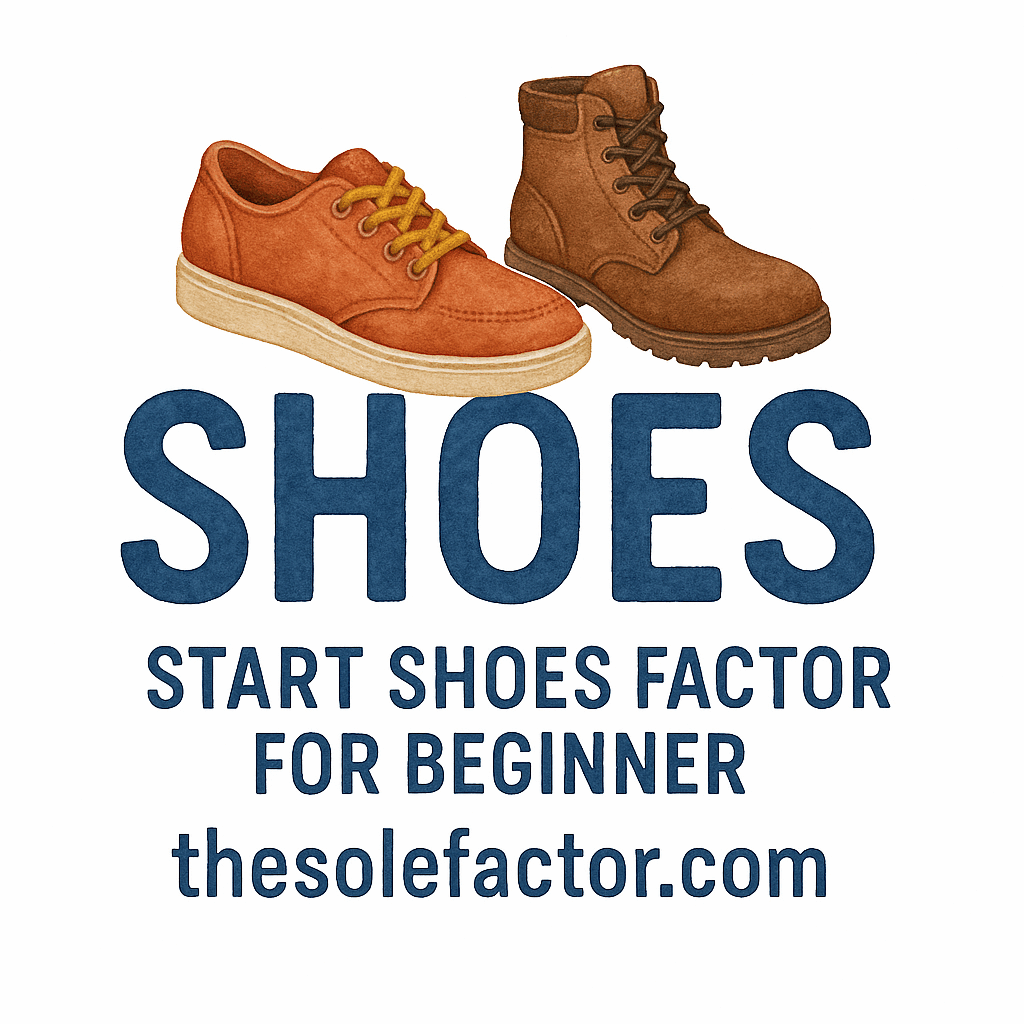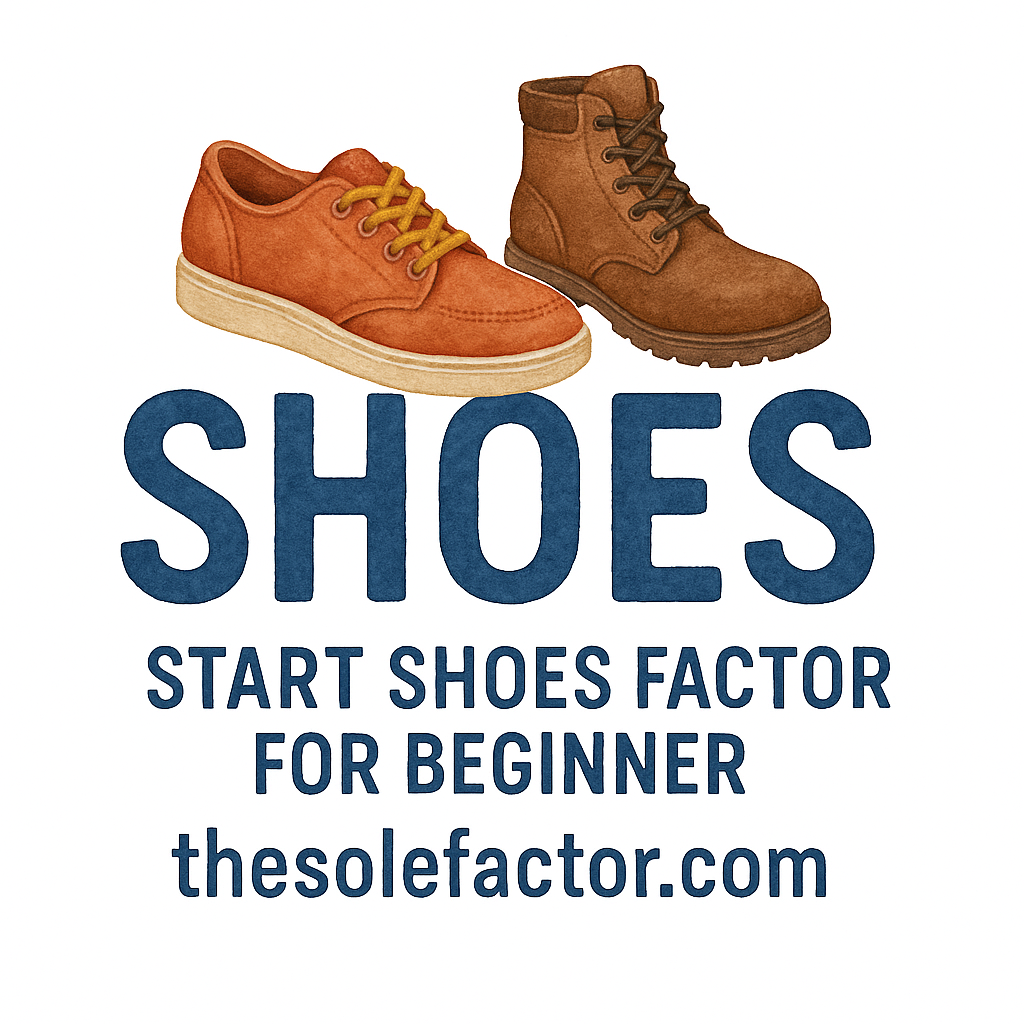Introduction: Debunking Common Shoes Factory Myths
Starting a shoes factory is an exciting venture, but with excitement often comes misinformation. Whether you’re just getting started or have already begun your journey into the footwear industry, it’s essential to sort fact from fiction. Unfortunately, there are many myths that deter potential entrepreneurs from pursuing their dreams.
Why It’s Important to Challenge These Myths
By debunking these myths, you’ll be better equipped to make informed decisions, plan your business, and ultimately build a successful shoes factory.
Myth 1: You Need Millions to Start a Shoes Factory
Many people believe that you need millions of dollars to start a shoes factory. This myth is particularly pervasive due to the misconception that shoe manufacturing requires extensive infrastructure and high-end technology.
The Reality: Shoes Manufacturing on a Budget
While some well-established factories might operate on large budgets, you don’t need millions to start. With careful planning, you can begin small, focusing on niche markets. Many shoe businesses have started with minimal investment by opting for lean manufacturing techniques and making use of local resources. Visit The Sole Factor for more insights on budgeting and operations.
Myth 2: It’s All About High-End Machines and Technology
Another myth is that the key to success in shoe manufacturing lies in having the most expensive, high-tech machinery. While technology certainly plays a role, it’s not the only factor.
The Reality: Balancing Manual Craftsmanship and Automation
Many successful manufacturers strike a balance between automation and manual craftsmanship. Depending on your scale, you can opt for semi-automated processes or even manual methods if you’re focusing on high-quality or bespoke products.
Myth 3: You Need to Have a Fashion Design Background
It’s easy to think that to run a shoes factory, you need to have a background in fashion design or footwear. After all, shoes are a fashion statement, right?
The Reality: Collaborating with Experts in Design and Manufacturing
The truth is that you don’t need to be a designer to succeed in the footwear industry. You can collaborate with experienced designers or even outsource the design process. Your primary focus should be on manufacturing and running the business side of things effectively. Learn more about shoe design trends.

Myth 4: Starting a Shoes Factory Is a One-Person Job
Some entrepreneurs believe they can launch and operate a successful factory all on their own. After all, how hard could it be to oversee production, sales, and marketing?
The Reality: Building a Strong Team for Success
The reality is that starting and scaling a shoe factory requires a team. You’ll need skilled workers, business managers, marketers, and designers. It’s essential to surround yourself with a capable team to ensure your factory’s long-term success. Read more about collaboration in business.
Myth 5: It’s All About Creating Your Own Designs
While having your own shoe designs might sound exciting, it’s not always necessary to create a new line of shoes from scratch. In fact, many successful shoe manufacturers collaborate with designers or buy designs from others.
The Reality: Focus on the Business and Production Side First
Starting a shoe factory is much more about mastering the production process and building a solid business foundation. Once you’ve established a reliable production line and gained a customer base, you can then think about adding custom designs.
Myth 6: The Shoe Market Is Saturated—There’s No Room for New Brands
A common misconception is that the shoe industry is so saturated that there’s no room for newcomers. But the truth is, new brands and innovative designs are always in demand.
The Reality: Niche Markets and Innovation Are Key
By identifying niche markets or focusing on unique designs, you can carve out a successful position in the market. New entrants often succeed by offering something different, whether it’s sustainable shoes, affordable pricing, or custom designs. Explore branding strategies for shoes.
Myth 7: You’ll Need a Huge Factory Space
A significant misconception is that you need vast factory space to start manufacturing shoes. However, many businesses start small and expand over time as they gain traction.
The Reality: Small-Scale Manufacturing Is Possible
You can begin with a smaller facility and scale up as demand increases. Small-scale production allows you to minimize overhead costs and maintain control over quality. Get advice on shoes factory basics here.
Myth 8: You Can’t Compete Without International Distribution
Many entrepreneurs believe they can’t succeed without distributing their shoes internationally. The global market is a tough nut to crack, and jumping straight into international distribution can be risky.
The Reality: Starting Local and Scaling Up
Focusing on a local market before expanding internationally is a more sustainable approach. It allows you to build your brand, understand consumer preferences, and improve product quality before taking the leap into global distribution. Learn more about planning and growth strategies.
Myth 9: The Marketing of Your Shoes Will Happen on Its Own
Even if you have a great product, you won’t get far without effective marketing. Many believe that if their shoes are good, people will automatically find them. Unfortunately, this is far from true.
The Reality: Strategic Marketing and Branding Efforts Are Crucial
Effective marketing strategies, including social media, influencer partnerships, and targeted advertising, are crucial for growing your brand and reaching your audience. Discover effective promotion strategies.
Myth 10: You Don’t Need to Worry About Financing If You Have a Good Idea
Some aspiring entrepreneurs think that a great idea is all they need to succeed, but without proper financial planning, even the best ideas can fail.
The Reality: Smart Budgeting and Financial Planning Are Crucial
You need to plan your budget carefully, whether it’s securing funding, managing expenses, or forecasting future growth. A solid financial plan is essential for the long-term sustainability of your shoes factory. Read more about budgeting for business.
Conclusion: Time to Get Real About Starting Your Shoes Factory
Debunking these myths is the first step toward launching your successful shoes factory. Don’t let misinformation stop you—embrace the realities of starting a shoe manufacturing business, and focus on smart planning, a strong team, and effective marketing.
Embrace the Reality, Not the Myths
The road to success in the footwear industry requires resilience, adaptability, and hard work. But with the right mindset and tools, you can turn your dreams of owning a shoes factory into a thriving reality.
FAQs
1. How much money do I need to start a shoes factory?
The initial investment can vary, but starting small and scaling gradually can help you manage costs.
2. Can I start a shoes factory with limited resources?
Yes, many successful shoe manufacturers have started with limited resources by focusing on efficiency and cost-effective solutions.
3. What skills do I need to run a shoes factory?
Key skills include manufacturing knowledge, business management, and marketing expertise.
4. What are some essential tools to have for shoe manufacturing?
Some essential tools include cutting machines, stitching equipment, and molding tools, depending on your scale.
5. How can I market my shoes effectively?
Focus on digital marketing strategies, such as social media advertising, influencer partnerships, and local outreach.
6. Can I design shoes myself, or do I need professionals?
You can either design shoes yourself or collaborate with designers for professional input.
7. How do I ensure my shoes are high-quality and competitive?
Focus on quality control, testing, and market research to stay competitive and offer quality products.


